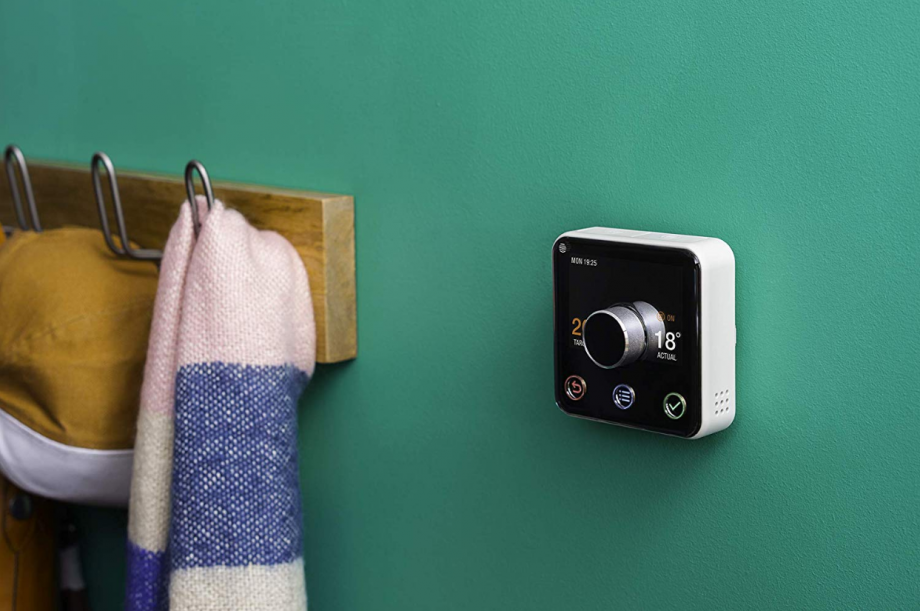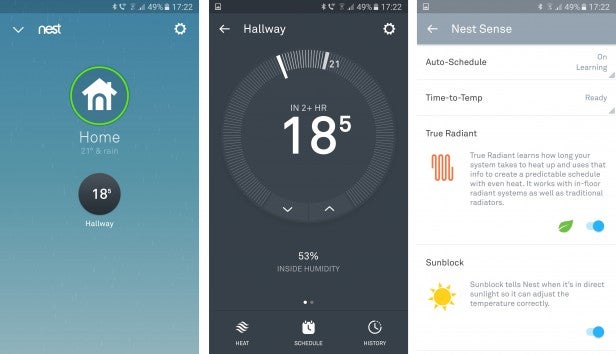Smart thermostat glossary – from air comfort to window mode

A smart thermostat adds brains to your heating system, giving you a more comfortable home and saving you money. But whether you’ve already installed smart heating, or you’re still doing research, it helps to understand some of the key terms. In this glossary, we’ll cover the things you need to know.
Air comfort
Not all smart thermostats measure air comfort, but those that do use a combination of features to try and assess how healthy the air is. A Tado system, for example, monitors temperature and humidity to warn when things are getting too hot, cold, damp or dry. It also factors in open window detection, to remind you when you last welcomed fresh air into your home.
Geolocation
Smart thermostats use geolocation, sometimes called geofencing or location detection, to understand when people are home. It’s a great way to save money, as the system can turn the heat down – or off completely – even if you’re just popping out for an hour. Geolocation is also a great comfort feature – smart thermostats can tell when you’re coming home, and start preheating to make sure you arrive to a warm house.
Geolocation usually depends on the thermostat app, running on a smartphone. When all the home’s phones are outside the home area, the system knows their owners are too.
Just be careful of this feature. If you have a house guest and then go out, your heating will turn off leaving your friend very cold.

Integration
Advanced users might want to integrate their smart thermostat with other smart devices. There are several ways to do this: most thermostats support Amazon Alexa or the Google Assistant, which you could use to control your heating by voice. Alternatively, some smart thermostats support If This Then That (IFTTT) – a platform that lets you link actions and events between more than one system. Using this, you could use the location information from your heating, for example, to switch lights on and off automatically.
Related: Best smart thermostat
OpenTherm
Older heating controls work in a simple way, turning the boiler on when the temperature drops, and off again once a set temperature is reached. This gets the house to the right average temperature, but the boiler is always either fully off, or fully on, and the temperature is rarely exactly right. It’s a bit like driving at a speed of 70mph by repeatedly sprinting to 80mph and coasting down to 60mph.
OpenTherm fixes this issue by letting the thermostat and boiler exchange more information. Instead of just asking for heat or not, OpenTherm lets thermostats say how much heat they need. OpenTherm systems can quickly heat up cold homes with piping hot radiators, or keep warm homes comfortable with more gentle heating. As a bonus, boilers are most efficient when they run cooler in this way, so OpenTherm saves you money, too. If you’ve got a boiler with the tech, read how OpenTherm can save you more money.
Open window detection
If you’ve ever asked, “Were you born in a barn?”, open window detection is for you. Sometimes called window mode, the feature detects the sudden change in temperature in a room when a door or window is opened, and shuts off the heat. You can often configure how long the effect lasts, but the idea is to prevent the energy wasted when you allow warm air to escape. This technology is particularly effective if you have a heating system with Smart Radiator Valves, such as Honeywell Evohome, as window detection will just affect a single room, rather than turning the heating off everywhere.
Schedule
Just like a conventional heating controller, most smart thermostats work on a schedule. This can either be one you’ve programmed yourself, or a ‘learned’ schedule based on the way you want the house heated – such as with Nest Learning Thermostats. Where a conventional programmer will slavishly follow your schedule, however, a smart thermostat uses features like geolocation and weather compensation to improve it, often saving you money and keeping you more comfortable.
Sensor
All smart thermostats contain at least one sensor, detecting air temperature. Some – such as Tado – also sense humidity. While that’s not necessary for the basics, it could be a useful addition if you’re interested in the health and freshness of your home.
Smart thermostat
If you’re reading this, you’ve probably already got a good idea of what a smart thermostat is. While their features vary, a smart thermostat generally uses cloud-based intelligence to manage your heating more efficiently than traditional programmers and thermostats. Most systems control your central heating by replacing your hall thermostat or programmer, but some – like Honeywell Evohome or Tado – can be expanded with additional rooms, hot water and radiator control. Check out our guide on how to save money with a smart thermostat.
Smart TRV
A smart thermostatic radiator valve (TRV) extends control over your heating down to individual radiators. In most cases, the smart thermostat replaces the head on an existing TRV, so provided you already have TRVs you can fit the smart upgrade yourself. Once fitted, smart TRVs communicate with the main smart thermostat, letting it know when the room they’re in is falling below the desired temperature. The main smart thermostat can fire up the heating, and the smart TRV opens to allow hot water into the radiator.
Smart TRVs give you maximum control over your heating, but to get the most from them you’ll need to fit one to every radiator on a heating circuit. Otherwise, when one smart TRV calls for heat, all the radiators will get warm. With a smart TRV on every radiator you can, for example, heat just your home office during the day, your lounge in the evening, and your bedrooms at night.
Weather compensation
Weather compensation uses weather data to adjust how your heating performs. For example, if a sunny spring day follows an overnight frost, a conventional system might heat powerfully in the morning, only for the home to become too hot in the afternoon. Weather compensation considers the forecasted temperature and cloud cover, and understands the need to scale back the heating in the morning. The end result is that you save money, and your home stays comfortable in the afternoon.


